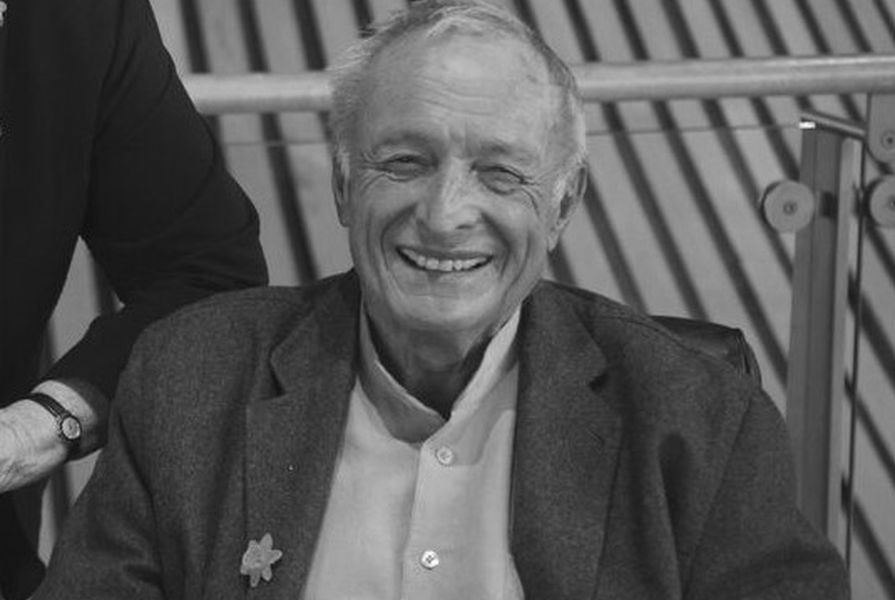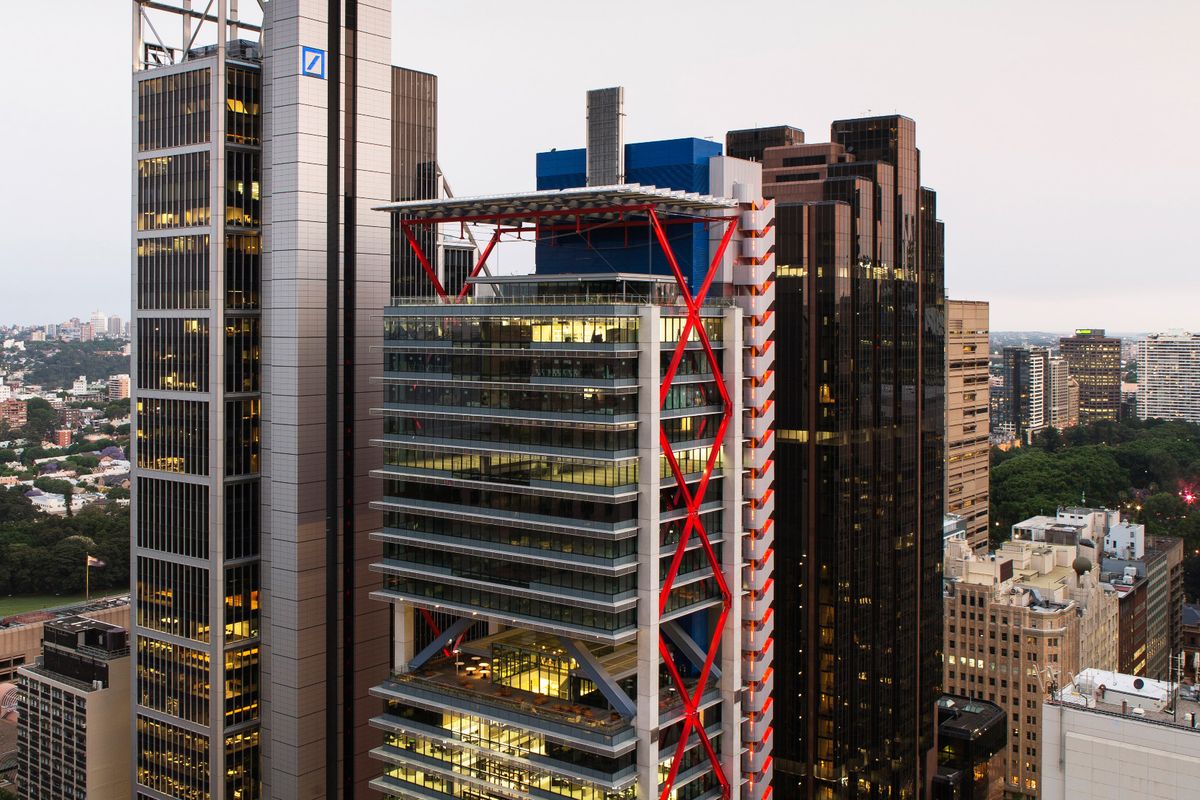With the death of Richard Rogers, at the age of 88 in December 2021, the architectural community lost one of the most influential architects of the late twentieth century. Rogers, whose career spanned more than 60 years, was notable first as a leading exponent of the British “high-tech” movement, whereby his buildings externalized the structure and services to prioritize the creation of flexible unencumbered interior space, and second as a leading urbanist who, through his design work and advocacy, changed the direction of city developments. His practice’s late career projects in Australia exhibit the legacy of these two strands.
Rogers was born in Italy in 1933 to British-Italian parents, who relocated to London in 1939 to escape Italian fascism. He studied at the Architecture Association in London, and afterwards at Yale, where he met Norman Foster. Challenged by dyslexia, Rogers failed to have his talent recognized at university, with one report from the AA saying: “He has a genuine interest in and a feeling for architecture, but sorely lacks the intellectual equipment to translate these feelings into sound building. His designs will continue to suffer while his drawing is so bad, his method of work so chaotic and his critical judgement so inarticulate.” This disorder would ultimately lead Rogers to set up a highly collaborative form of practice where he worked closely with project leaders and co-directors.
The Lloyd’s of London building was heritage listed in 2011, becoming the youngest building ever to be listed.
Image: Lloyd’s of London
In 1963, having returned from the USA, Rogers set up Team 4 with his Su Brumwell, Wendy Cheesman, and Norman Foster. The partnership undertook small commissions including the Creek Vean House for Brumwell’s parents, which nearly bankrupted the designers and clients, and saw Rogers and Foster summoned to the Architects Registration Council for practicing without a license.
It was the successful entry into the Pompidou Centre competition in Paris, in collaboration with Renzo Piano, that launched his career. Two aspects of the competition scheme would form the core of Rogers’s architectural philosophy, which would continue throughout his career and into his Australian projects. The first was the creation of universal flexible space which can be modified to fit any program. To achieve this the structure and services were pushed to the perimeter and became the building’s expression. The second was the freeing-up of the ground plane to create an urban space.
8 Chifley Square by Rogers Stirk Harbour & Partners with Lippmann Partnership occupies a prominent site in Sydney’s CBD adjacent to the Deutsche Bank building by Foster and Partners with Hassell.
Image: Brett Boardman
In 1977, having completed the Pompidou Centre, he established the Richard Rogers Partnership. His early career largely focused on individual buildings that created universal flexible space through the relocation of services and structure to the perimeter. The most notable of this period was the Lloyd’s of London building, won in competition in 1978. Inserted into the historic heart of the Square Mile in London the design created pure uninterrupted floor plates organised around a central vertical atrium, with perimeter structure and services. Despite early criticism, the building was heritage listed in 2011, becoming the youngest building ever to be listed.
Over 25 years later Rogers’s practice, renamed Rogers Stirk Harbour and Partners, completed 8 Chifley in collaboration with the Lippman Partnership in Sydney. This building incorporates the DNA of Lloyd’s, continuing the principles of uninterrupted universal space into a high-rise typology. A pure plan form is enabled through perimeter structure and services, albeit less overtly expressed than Lloyds. The floorplates are organized around three- and four-storey vertical villages, with a series of outdoor sky terraces humanizing the building on then skyline. Ed Lippman, in an obituary for the Sydney Morning Herald, writes, “Richard had a unique way of working. He had the capacity to visualise complex spatial relationships and inspire the people he surrounded himself and collaborated with. He was an excellent commentator and directed things from behind the scenes. It was therefore no surprise to finally witness, firsthand, his inability to draw, or even hold a pencil!”
In contrast, Rogers later career focused on campaigning for better cities and public life. Beginning with the Royal Academy Exhibition in 1986 “London as it Could Be,” which proposed changes to humanize central London, Rogers became increasingly active at a political level. He articulated his thoughts about creating sustainable compact connected cities in the 1995 BBC Reith Lectures, which were later published in the book Cities for a Small Planet. In 1996, Rogers was made a life peer of the House of Lords, taking the title Lord Rogers of Riverside, and increasing his public influence.
International Towers Sydney, in Barangaroo, by Rogers Stirk Harbour and Partners
Image: Brett Boardman
He later became the Chair of the Urban Task Force, leading to the publication of Towards an Urban Renaissance, which promoted the densification and regeneration of inner cities through building in brownfield sites connected to existing transport infrastructure.
As a result, Rogers’s practice became increasingly involved in masterplans and visions for cities in the later part of his career. The vast majority of these remain unrealized, most disappointingly a masterplan for the development of the Pudong District of Shanghai. Barangaroo is unequivocally the most completed masterplan vision from Rogers’s practice. This waterfront district is a western extension of the city on post industrial working wharves. Based around a traditional network of streets, lanes, and public space, with through-block connections and a podium and tower typology, the area is today a thriving living, working and entertainment place.
Rogers was awarded the RIBA Gold Medal, the Pritzker Prize, and twice received the Stirling Prize. He leaves a legacy of outstanding buildings, projects, publications, and thinking that will influence architects for generations. He also created a practice model that “enshrines ideas about community, teamwork, equity, collaboration and social responsibility,” as his firm’s constitution puts it.
Australia is fortunate to have two legacies from Richard Rogers’s career, with a third, the Melbourne Metro, in construction.
Philip Vivian is a director of Bates Smart. He is an architect and has a Masters of Architecture and Urban Design from Columbia University, New York and has studied Global Cities at the London School of Economics.






















